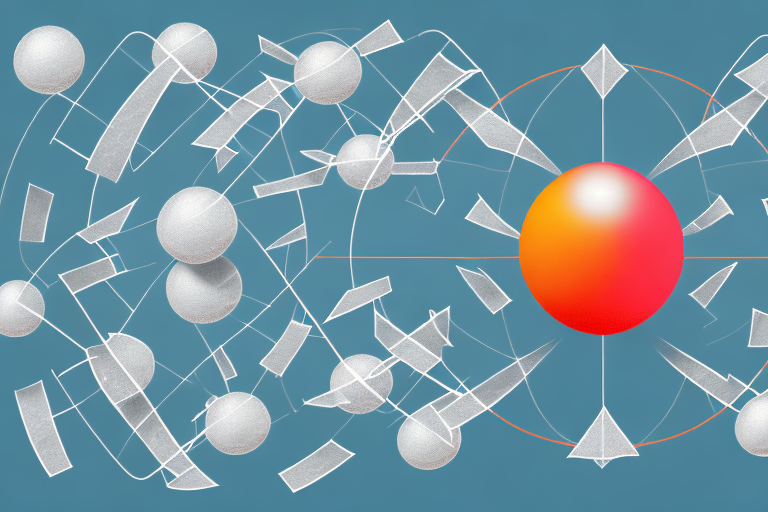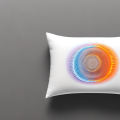If you’re someone who frequently experiences muscle pain, then you may have heard of a “trigger point ball.” This small, handheld massage tool is designed to target specific points of tension in your muscles, with the goal of releasing knots and improving overall muscle function. In this article, we will provide a step-by-step guide on how to use a trigger point ball effectively, as well as discuss its benefits, how to choose the right ball for you, and more. Just keep in mind that consistency is key when using a trigger point ball, so be sure to incorporate it into your regular self-care routine for the best results.
What is a Trigger Point Ball?
Simply put, a trigger point ball is a small, firm ball designed to put pressure on specific points of tension in your muscles. It is a type of self-myofascial release tool, which means it uses pressure to release knots and tight spots in the fascia – the connective tissue that surrounds and supports your muscles. The ball is made from various materials, such as rubber, foam or plastic, and comes in different shapes and sizes, depending on the area of the body it is designed to target.
Using a trigger point ball can help to improve flexibility, reduce muscle soreness and improve overall muscle function. It is commonly used by athletes, fitness enthusiasts and individuals with chronic pain or tension. When using a trigger point ball, it is important to start slowly and gradually increase pressure as your muscles become more accustomed to the sensation. It is also important to drink plenty of water and stretch after using the ball to help flush out toxins and prevent muscle soreness.
Benefits of Using a Trigger Point Ball
When used correctly, a trigger point ball can be a highly effective tool for improving muscle function and reducing pain. Some of the benefits of using a trigger point ball include:
- Reducing muscle tension and soreness
- Improving flexibility and range of motion
- Promoting better circulation
- Enhancing athletic performance
- Reducing the risk of injury
Understanding Trigger Points and Their Importance
It’s important to understand what a trigger point is and how it can affect your body. A trigger point is a small, highly-sensitive area within a muscle that can cause pain, weakness, or decreased range of motion. Trigger points can occur as a result of injury, stress, or overuse of the muscle. This is where the trigger point ball comes in. By targeting these specific points of tension with pressure, you can help release the knot and improve function in the muscle.
How to Choose the Right Trigger Point Ball for You
There are many different types of trigger point balls available on the market, and choosing the right one can be overwhelming. When selecting a ball, consider the size and material. Larger balls are generally better for larger muscle groups, while smaller balls are great for more targeted areas, like your feet or hands. Additionally, some people may prefer the firmness of a plastic ball over the softness of a foam ball, while others may prefer the opposite. It’s important to experiment with different types of balls to find the one that works best for you.
Preparing for Your Trigger Point Ball Session
Before you start using your trigger point ball, there are a few things you should do to prepare your body:
- Drink plenty of water to stay hydrated
- Choose a quiet, comfortable space where you won’t be disturbed
- Wear loose-fitting, comfortable clothing
- Do a few minutes of light stretching to warm up your muscles
Step-by-Step Guide to Using a Trigger Point Ball on Different Body Parts
Here’s a step-by-step guide on how to use your trigger point ball on different parts of your body:
Back and Neck
To target your back and neck, lie on the floor with the ball placed underneath your shoulder blade. Slowly roll the ball up and down the length of your spine, stopping at any tight or sore spots. Repeat on the other side.
Feet
To use the ball on your feet, place the ball on the floor and put your foot on top. Roll the ball back and forth on the arch of your foot, paying extra attention to any areas that feel tight or sore.
Glutes
To target your glutes, place the ball on the floor and sit on top of it, with the ball positioned under one buttock. Roll back and forth, shifting your weight to apply more or less pressure as needed. Repeat on the other side.
Chest
To use the ball on your chest, place the ball against a wall and lean into it, using your body weight to apply pressure. Move the ball up and down and side to side to target different areas of your chest.
Tips for Effective Use of a Trigger Point Ball
When using a trigger point ball, keep these tips in mind:
- Start with gentle pressure and progress to deeper pressure as your muscles become more used to the sensation
- Breathe deeply and slowly as you use the ball to help release tension and relax your muscles
- If a spot feels too tender or painful, ease up on the pressure
Common Mistakes to Avoid While Using a Trigger Point Ball
Here are some common mistakes people make when using a trigger point ball:
- Applying too much pressure, which can aggravate your muscles and cause more pain
- Using the ball on an injured area without consulting a healthcare provider first
- Ignoring pain or discomfort during use, which can be a sign that you need to ease up on the pressure or stop altogether
Incorporating Trigger Point Therapy into Your Fitness Routine
By incorporating trigger point therapy into your fitness routine, you can improve your overall muscle function, reduce the risk of injury, and enhance athletic performance. Try using a trigger point ball before or after a workout to warm up or cool down your muscles, or on rest days to help reduce muscle soreness and improve flexibility.
Safety Measures to Follow While Using a Trigger Point Ball
While trigger point balls are generally safe to use, there are a few safety measures to keep in mind:
- Consult with a healthcare provider before using a trigger point ball if you have any injuries or underlying medical conditions
- Avoid using the ball on your spine, joints, or bony areas
- Do not use the ball on open wounds or areas of inflammation
When and How Often Should You Use a Trigger Point Ball?
Try using a trigger point ball for 5-10 minutes per muscle group, 2-3 times per week. However, everyone’s body is unique, so listen to your own body and adjust frequency and duration as needed.
Additional Tools and Techniques to Enhance Your Trigger Point Therapy Experience
While a trigger point ball can be a highly effective tool on its own, there are other tools and techniques that can help enhance your overall trigger point therapy experience. These might include foam rollers, massage guns, stretching, and yoga. By combining different techniques, you’ll be better equipped to target areas of tension and improve overall muscle function and flexibility.
By following these step-by-step instructions, tips, and best practices, you can effectively use a trigger point ball to help reduce muscle pain, increase flexibility, and improve overall muscle function. Remember to be patient and consistent, as it may take time for you to see and feel the results you’re looking for.





